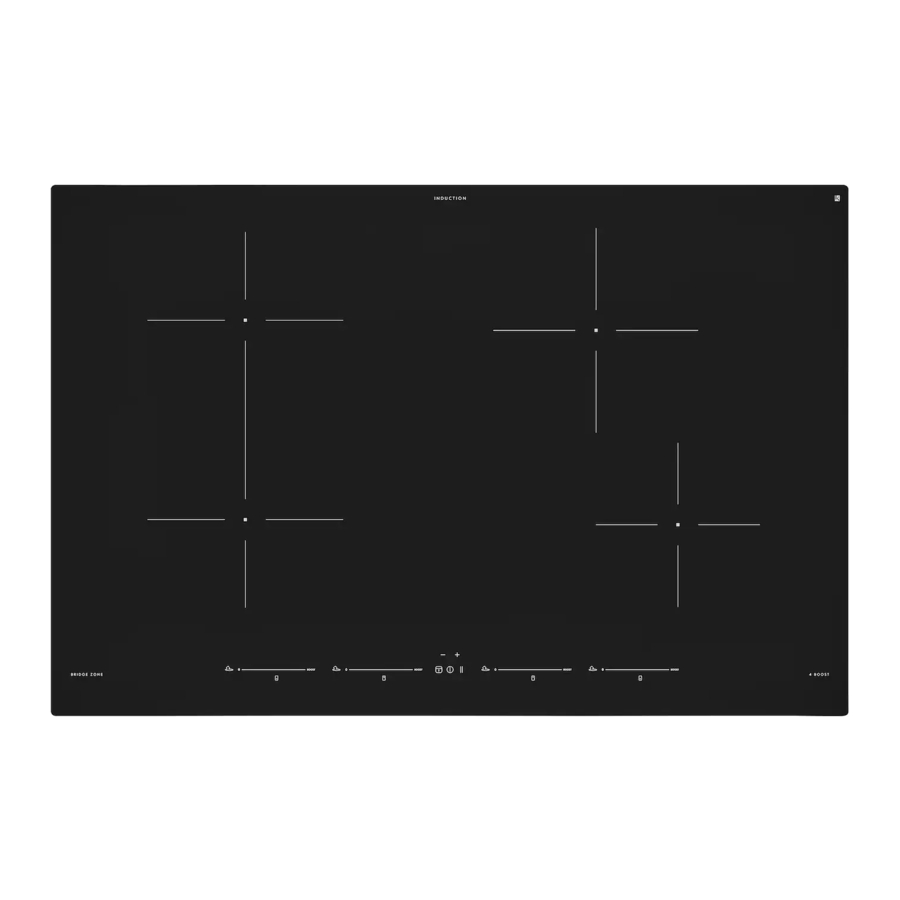IKEA UTNAMND 매뉴얼 - 페이지 19
{카테고리_이름} IKEA UTNAMND에 대한 매뉴얼을 온라인으로 검색하거나 PDF를 다운로드하세요. IKEA UTNAMND 32 페이지.

ENGLISH
Cookware guidance
What pots to use
Only use pots and pans with bottom made
from ferromagnetic material which are
• cast iron
• enamelled steel
• carbon steel
• stainless steel (although not all)
• aluminium with ferromagnetic coating or
ferromagnetic plate
To determine if a pot or pan is suitable,
check for the
symbol (usually stamped on
the bottom). You can also hold a magnet to
the bottom. If it clings to the underside, the
cookware will work on an induction hob.
To ensure optimum efficiency, always
use pots and pans with a flat bottom that
distributes the heat evenly. If the bottom
is uneven, this will affect power and heat
conduction.
How to use
Minimum diameter of pot/pan base for the
different cooking areas
To ensure that the hob functions properly,
the pot must cover one or more of the
reference points indicated on the surface of
the hob, and must be of a suitable minimum
diameter.
Always use the cooking area that best
corresponds to the diameter of the bottom
of the pan.
Cooking
Cookware diameter (mm)
area
Ø min.
(recommended)
Bridge left
190 mm
side
Right rear
110 mm
Right front
110 mm
Left rear
110 mm
Left front
110 mm
Empty or thin-based pots/pans
Do not use empty or thin-based pots/pans
on the hob as it will not be able to monitor
the temperature or turn off automatically if
the temperature is too high, damaging the
pan or the hob surface. If this occurs, do not
touch anything and wait for all components
to cool down.
If an error message appears, refer to
Hint/tips
Noise during cooking
When a cooking area is active, it may hum
briefly. This is a characteristic of all induction
cooking zones and does not impair the
function or life of the appliance. The noise
depends on the cookware used. If it causes
considerable disturbance, it may help to
change the cookware.
Normal operating noises of the induction
hob
lnduction technology is based on the
generate heat directly on the bottom of
cookware. Pots and pans may cause a variety
of noises or vibrations depending on how
they are manufactured.
Low humming (like a transformer)
This noise is produced when cooking at a
high heat level. lt is based on the amount of
energy transferred from the cooktop to the
cookware. The noise ceases or quiets down
when the heat level is reduced.
Quiet whistling
This noise is produced when the cooking
Ø max
vessel is empty. lt ceases once liquids or food
(recommended)
are placed in the vessel.
370 mm
200 mm
Crackling
160 mm
This noise occurs with cookware comprised
190 mm
of various materials layered one upon the
other. lt is caused by the vibrations of the
190 mm
19
